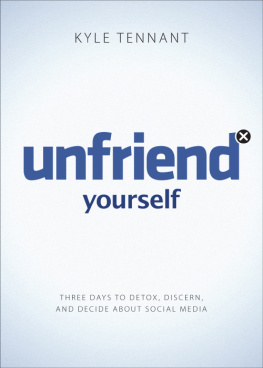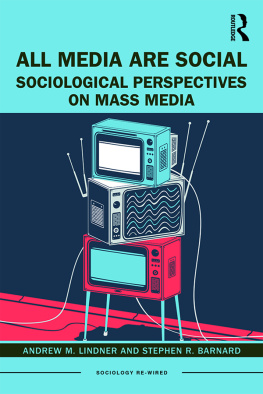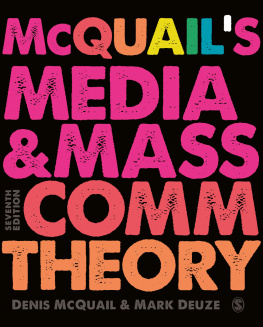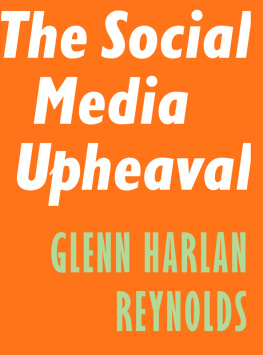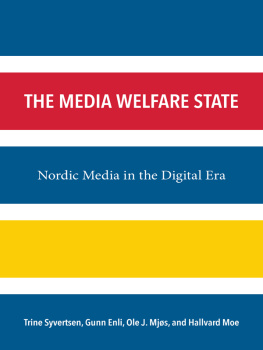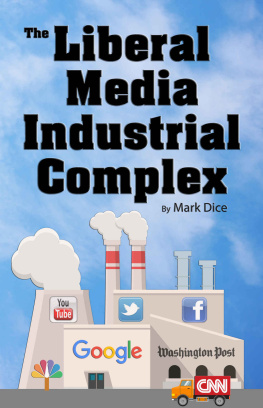1. Media Resistance: Connecting the Dots
Abstract
The chapter introduces the analysis of media resistance and presents the research questions: What is at stake for resisters, how did media resistance inspire organized action and how is media resistance sustained? Media resisters are often seen as moralists, Luddites, laggards or cultural pessimists, but this book argues that media resistance is grounded in broadly shared values: Morality, culture, enlightenment, democracy, community and health.
Growing up Without Television
I grew up without television. My parents believed that television was a bad thing; it cost too much, would take attention away from other activities, would lead to passivity and obstruct family life. This was in Norway in the 1960s and my parents beliefs resonated with the dominant misgivings about television at the time.
As a child, I was proud of our TV-free life. But the resistance did not stick. I moved in with others who had television. I did media studies in the 1980s and began to appreciate television as both an object of study and an object of fandom. When I began to teach television studies in the 1990s, I would customarily refute claims that television was bad, being more interested in the actual operations of television institutions in society.
Then two things happened that (re-)kindled my interest in media resistance. I became dean of a diverse humanities faculty in the 2000s and experienced first-hand the deep ambivalence many in the humanities feel towards the media and media studies. There was still a sense that mass media objects were not worthy of academic attention, and that the discipline was slightly suspect, too celebratory and getting too much attention.
The second thing that happened was social media. After an initial warm welcome, online and social media began to provoke diverse expressions of resistance. In the 2010s, complaints began to pop up in conversations that reminded me of the anti-television stance of my childhood. As statements and confessionals about invasive media proliferated, the labels customarily used by media scholars and liberals to describe media resistance, of media panic and technophobia did not really seem to fit. In an era of ubiquitous media, it seems like we all need a measure of resistance, or at least a strategy for self-regulation, to keep our engagement with media in check.
And so the tables keep turning. I have written this book because I am curious about those who resist, and how media resistance is sustained as a powerful presence in our culture. I have also written it because I believe that media studies should devote more attention to expressions and acts of resistance, how they connect, persist and change.
The Book
New media divide opinion; many are fascinated while others are disgusted. This book is about those who dislike, protest and abstain from media both new and old. The aim is to explore media resistance across media and historical periods, explain continuities and differences, and discuss how media resistance is sustained. The discussion is based on two questions asked in each chapter: What is at stake and what to do how does media resistance inspire organized action?
Many current and historical works refer to media resistance. Books on digital media discuss the arguments of both enthusiasts and sceptics (see, for example, Bauerlein ).
Yet, despite the interest in media scepticism and dislike, few address media resistance as a more general phenomenon transcending types of media, historical periods and national borders. Few have also studied resistance as a common form of media reception: investigating motives, sources of inspiration and forms of action. As media becomes ubiquitous, more studies of voluntary abstention emerge, such as Krcmars (). But media resistance has a long and complex history that deserves more intellectual scrutiny.
This book explores resistance from the early phase of mass media to present-day digital media. A retrospective perspective is particularly interesting nowadays, as new debates over digital media illuminate qualities of previous debates. Media history is not written once for all; new modes require new historical scrutiny and may change the way we understand the past. As todays media users struggle with aspects they are uncomfortable with whether it is invasiveness, surveillance, content perceived to be problematic, or other features a new look at the history of media resistance is fruitful in order to discuss what is recurring and what is changing over time.
Drawing on cases and examples from both sides of the Atlantic, media resistance is discussed as a diverse phenomenon encompassing political, professional, networked and individual arguments and actions. Based on sources such as political documents, press clippings, websites, organizational documents, non-fiction bestsellers and personal testimonies, the book explores narratives of resistance and how media is placed in a villainous and destructive role. The analysis also draws on dystopic fiction and film to show how themes in media resistance are depicted in popular culture. While resistance to media has inspired writers and film-makers, resisters have in turn been inspired by dystopic depictions. As will be noted throughout the book, media resistance does not depend on specific, detailed or even empirical evidence, whereas dystopic fiction remains a recurring source of inspiration.
Moralists, Luddites and Laggards
The study of media resistance cuts across fields and disciplines: cultural studies, sociology, media policy, and audience and technology studies. Although the approaches vary, there is a tendency to conceptualize resistance to media in rather negative terms: resistance is seen as a form of panic, an irrational reaction, caused by technophobia, fear, hysteria or social marginalization. The underlying premise is often that those who resist are moralists (subject to irrational moral panics), Luddites (against technology and progress), laggards (marginalized, slow adopters) or cultural pessimists (sceptical of popular culture and modern life).
Historically, much protest against the media has been grounded in moral judgements, and churches and moral movements have favoured censorship and restrictions ( ; for overviews). Criticism of moral panic is also used by media operators as self-defence, indicating that critics are merely moralists and there is no need to take notice.
Academically, the tradition of moral panic deals with mobilised and orchestrated scares, how fears are promoted to prepare the ground for political and legal interventions (Barker ).
Although the tradition focuses on orchestrated fears, there is a tendency that the labels of panic, hysteria and fear rub off on those who protest. For example, in an article comparing social fears surrounding popular literature and Internet, Sutter (, 162) poses a typical dichotomy between the rational and hysterical:
A balanced, cautious approach to new technologies and the uses to which they may be put, is of course sensible. However, not all critics of new media throughout history have been rational and balanced in their judgement. Both the arrival of cheap weekly publications in the Victorian era and the internet at the end of the twentieth century were subject to much hysteria, emphasising their supposed negative social effects, even blaming them for a range of social ills.





